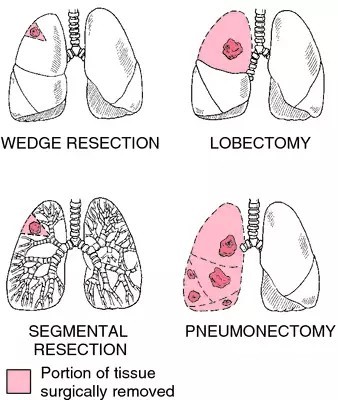The nurse is providing discharge teaching to a client who underwent a pneumonectomy. The client wants to resume social activities with family. How should the nurse respond?
Encourage family gatherings to reduce feelings of isolation.
Explain the need to avoid persons with respiratory infections.
Reinforce the need to avoid social contact for several weeks.
Recommend the use of a face mask during family events.
The Correct Answer is A
Following a pneumonectomy, it is important for the client to gradually resume normal activities and engage in social interactions. Encouraging family gatherings can provide emotional support, facilitate social connections, and help reduce feelings of isolation that the client may be experiencing.
While it is generally important for clients who have undergone a pneumonectomy to take precautions to reduce the risk of respiratory infections, such as avoiding crowded places and individuals with respiratory infections, completely avoiding social contact for several weeks is not necessary or realistic in most cases. It is essential to find a balance between protecting the client's health and promoting their emotional well-being and social integration.
Wearing a face mask during family events may not be necessary unless there is a specific concern about respiratory infections. The nurse can educate the client about the importance of good hand hygiene and avoiding close contact with individuals who are actively ill with respiratory infections.

Nursing Test Bank
Naxlex Comprehensive Predictor Exams
Related Questions
Correct Answer is ["1.4"]
Explanation
Calculate the total dosage required: 44 mcg/kg * 65 kg = 2860 mcg. Convert mcg to mg: 2860 mcg ÷ 1000 = 2.86 mg.
Divide by concentration: 2.86 mg ÷ 2 mg/mL = 1.43 mL.
Considering the vial contains 2 mg/mL, the nurse should administer around 1.43 mL, which can be rounded to 1.4 mL.
Correct Answer is A
Explanation
A low serum creatinine level indicates decreased muscle mass or impaired kidney function. However, it does not necessarily indicate that the 24-hour creatinine clearance test should be withheld or delayed.
Initiating the urine collection as prescribed allows for the accurate assessment of creatinine clearance and provides valuable information about the client's kidney function. The test results can help guide further evaluation and management of the client's condition.
Assessing the client's serum BUN level, notifying the healthcare provider of the results, or assessing for signs of hypokalemia may be relevant in certain situations but are not the immediate priority based on the information provided.
Whether you are a student looking to ace your exams or a practicing nurse seeking to enhance your expertise , our nursing education contents will empower you with the confidence and competence to make a difference in the lives of patients and become a respected leader in the healthcare field.
Visit Naxlex, invest in your future and unlock endless possibilities with our unparalleled nursing education contents today
Report Wrong Answer on the Current Question
Do you disagree with the answer? If yes, what is your expected answer? Explain.
Kindly be descriptive with the issue you are facing.
